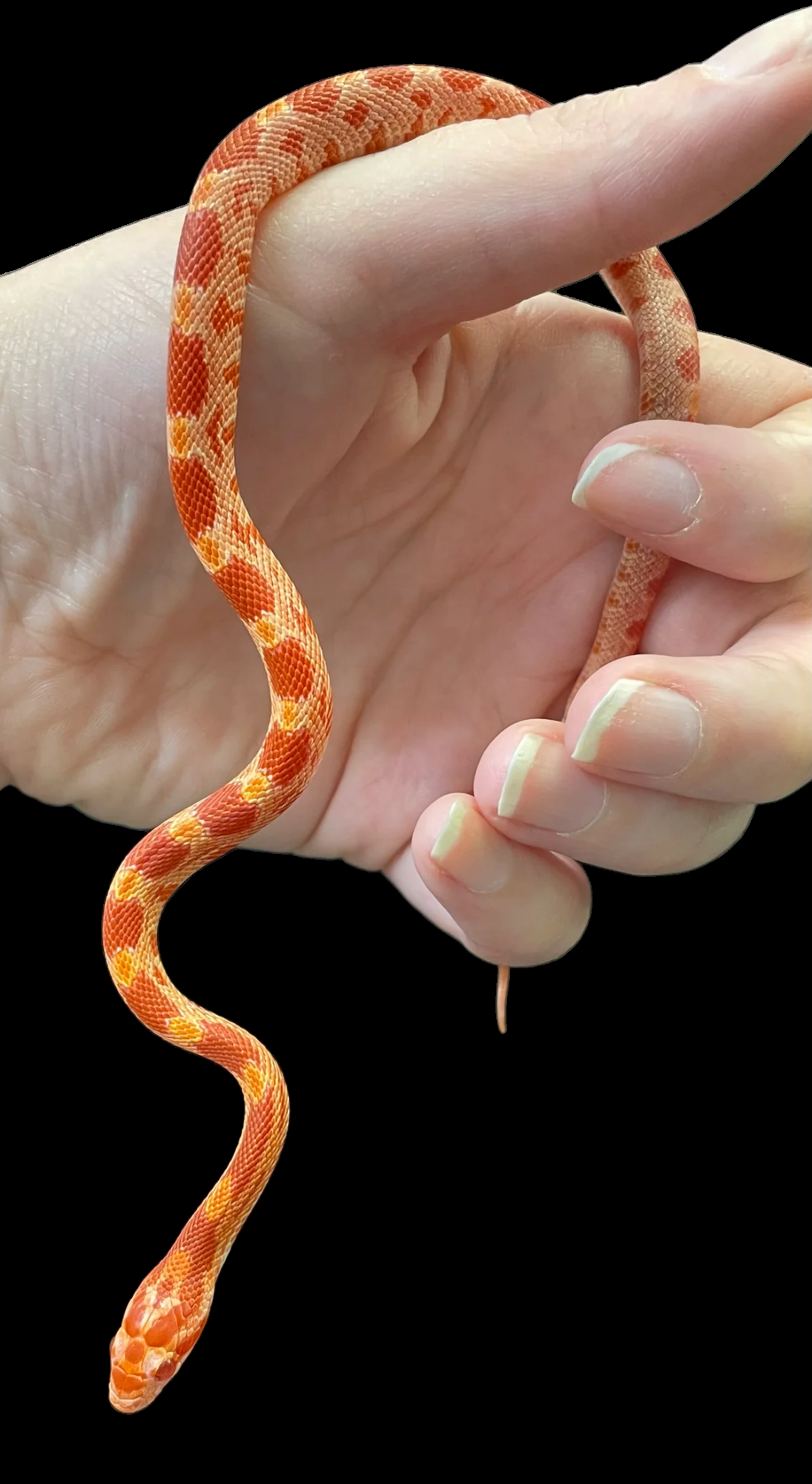Photo Disclaimer
Description
Corn Snake (Amel)
Scientific Name: Pantherophis guttatus
Common Name: Corn Snake
Species Overview
Size: Adults typically reach 3–5 feet (0.9–1.5 m) in length, with a slender, well-proportioned body and smooth, glossy scales.
Appearance: The Amel (short for Amelanistic) Corn Snake is one of the most iconic and foundational morphs in the hobby. The Amelanistic trait removes all black pigment, resulting in a vivid display of red, orange, and white coloration with striking red eyes. Patterning remains the classic blotched Corn Snake layout — large, rich orange to red saddles outlined in lighter tones over a clean, checkered belly pattern. This morph highlights the natural beauty of the species while enhancing its brightness and contrast.
Distribution: A captive-bred color morph of the Corn Snake (P. guttatus), originally native to the southeastern United States.
Habitat: In the wild, Corn Snakes inhabit pine forests, open woodlands, meadows, and farmlands. In captivity, they thrive in naturalistic enclosures designed with cover, climbing options, and ample space to explore.
Behaviour: Corn Snakes are calm, curious, and adaptable. They are most active at dawn and dusk, exploring both ground and low climbing areas. Their consistent feeding behavior and tolerant nature make them one of the best beginner and display snakes available.
Captive Care
Enclosure: Adults thrive in a naturalistic 40-gallon terrarium (36” × 18” × 18”) or larger. A bioactive or soil-based substrate with leaf litter supports burrowing and natural behavior. Provide multiple hides, cork bark, and branches for climbing and enrichment.
Temperature & Humidity: Maintain a gradient of 75–82°F (24–28°C) with a basking spot of 86–88°F (30–31°C). Nighttime drops to 70°F (21°C) are ideal. Humidity should stay between 40–60%, with a humid hide provided during shedding.
Diet: Offer frozen-thawed rodents every 7–10 days for juveniles and every 10–14 days for adults. Prey size should be roughly equal to 1.25× the snake’s mid-body width.
Behaviour in Captivity: Gentle, easy to handle, and highly interactive once acclimated. Corn Snakes are intelligent for colubrids and benefit from frequent environmental enrichment and gentle handling routines.
Special Considerations: Corn Snakes are exceptional escape artists — ensure all enclosures are tightly secured. Naturalistic habitats not only showcase their vivid colors but also encourage natural activity and behavior.
Genetics Note
Amelanistic (Recessive)
Removes all melanin (black pigment), producing bright red, orange, and white coloration with red eyes. This trait is one of the oldest and most widely recognized in Corn Snakes. The lack of black pigment allows other color layers to appear more vivid and saturated.
Genetic Combination Summary
The Amel morph is a single recessive genetic trait:
-
Amel = Removes all black pigment, creating red, orange, and white coloration
This simple yet visually stunning morph serves as the genetic foundation for countless other combinations, including Amel Motley, Snow, Amber, and Butter.

